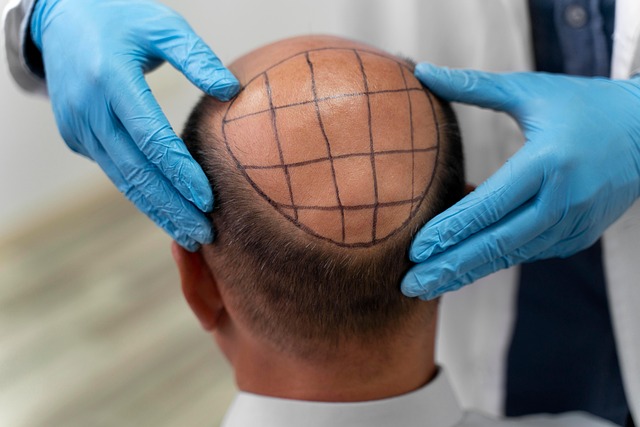Next-Gen Hair Restoration: Advances in Transplantation
Hair loss can undermine confidence and quality of life, but modern hair transplantation methods offer realistic, lasting solutions. This article explores current techniques like FUT and FUE, eyebrow transplants, technological innovations such as robotic FUE and PRP, plus emerging therapies like hair cloning and gene treatments—helping readers make informed choices about hair restoration.

Hair loss affects millions worldwide and can have a profound emotional impact. Advances in surgical techniques and supporting technologies have transformed hair restoration into a dependable option for people seeking natural, long-lasting results. This article examines established transplant methods, their benefits, special applications such as eyebrow restoration, important preoperative considerations, recent technological improvements, and what the future may hold for hair restoration.
Core transplantation techniques: FUT and FUE
Two principal surgical approaches dominate modern hair transplantation: Follicular Unit Transplantation (FUT) and Follicular Unit Extraction (FUE). FUT, sometimes called the strip method, involves removing a narrow strip of scalp from a donor area, from which technicians dissect follicular units for planting. FUE, in contrast, harvests individual follicular units directly from the donor zone using small punches.
Each method has strengths. FUT can yield a large number of grafts in a single session and may be more time-efficient for extensive cases. FUE minimizes a linear scar and often shortens visible recovery time, making it popular among those who prefer shorter hairstyles. The preferred technique depends on the patient’s hair characteristics, extent of hair loss, scarring tendencies, and the surgeon’s judgment.
Benefits of choosing hair transplantation
Hair transplantation offers several clear advantages compared with temporary or non-surgical alternatives:
- Natural appearance: When executed by experienced surgeons, transplanted follicles produce hair that matches the patient’s texture and growth pattern, enabling a harmonious hairline and density.
- Longevity: Transplanted follicles from genetically resistant donor areas tend to maintain growth, providing a durable solution unlike wigs or concealers.
- Low upkeep: Once established, transplant hair is washed, styled, and maintained like native hair without special daily routines.
- Psychological gains: Restoring hair often improves self-image and daily confidence, with positive effects on social and professional life.
- Versatility: Transplants can address male and female pattern hair loss, hair loss from trauma or scars, and refine hairline aesthetics.
Eyebrow transplantation: an artful application
Surgeons have adapted transplant techniques for delicate areas such as the eyebrows. Eyebrow transplantation uses scalp follicles carefully placed to recreate natural eyebrow shape, direction, and density. Because eyebrow hair differs in angle and growth behavior, the procedure requires meticulous planning and a strong aesthetic sense. Results can repair overplucked brows, replace hair lost to injury or disease, and achieve tailored shaping that complements facial features.
Key considerations before committing to surgery
A successful outcome begins with realistic expectations and comprehensive preoperative planning. Important factors to evaluate include:
- Expectations and goals: Understanding achievable density and naturalness is essential for satisfaction.
- Pattern and progression of hair loss: Predicting future thinning helps create a plan that remains effective over time.
- Donor supply: Adequate donor hair in the back and sides of the scalp is critical to cover recipient areas.
- Financial and time commitments: Multiple sessions may be needed, and costs vary by clinic, graft count, and technique.
- Surgeon qualifications: Experience, credentials, and a strong portfolio of before-and-after cases are vital when choosing a provider.
- Risks: As with any surgery, possible complications include infection, scarring, temporary shock loss, or less-than-ideal cosmetic results if not performed correctly.
How technology is reshaping procedures
| Technology | Benefits | Impact on Procedure |
|---|---|---|
| Robotic-assisted FUE | Greater consistency and speed in extraction | Reduced manual fatigue and potentially higher graft survival |
| Advanced imaging | Improved planning of hairline and graft distribution | More accurate, natural-looking outcomes |
| Platelet-rich plasma (PRP) | Enhanced healing and graft take | Faster recovery and improved graft survival rates |
| Stem cell research | Potential to regenerate follicles | May expand options for patients with limited donor hair |
Prices, rates, or cost estimates mentioned in this article are based on the latest available information but may change over time. Independent research is advised before making financial decisions.
Technological innovations have improved precision and predictability. Robotic systems help with consistent FUE extractions and reduce surgeon fatigue. High-resolution imaging and planning tools enable more natural hairline design and optimized graft placement. Adjunctive therapies such as PRP can support healing and possibly increase graft survival. Experimental areas like stem-cell-driven follicle regeneration and tissue engineering aim to create new sources of transplantable hair.
What to expect in the near future
The pipeline for hair restoration is active, offering several promising directions:
- Hair cloning and tissue engineering: Researchers are working to multiply hair-producing cells or engineer new follicles, which could provide abundant graft material for extensive balding.
- Gene-based approaches: Identifying and targeting genetic contributors to hair loss could lead to treatments that prevent or reverse thinning at a molecular level.
- Improved pharmacologic options: Next-generation topical and systemic agents may slow progression or stimulate regrowth without surgery.
- Multimodal strategies: Combining transplants with therapies like PRP, low-level laser therapy, and medical treatments often yields superior, longer-lasting results.
As these developments mature, patients may benefit from less invasive, more customizable, and more comprehensive hair restoration plans.
This article is for informational purposes only and should not be considered medical advice. Please consult a qualified healthcare professional for personalized guidance and treatment.






